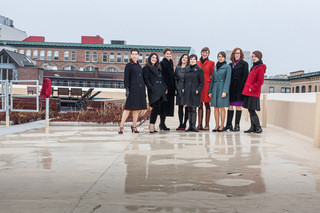|
Back
The Imaginary Art Gallery New York
Issac Stern Auditorium, Carnegie Hall
03/02/2017 -
Maurice Ravel: Le Tombeau de Couperin
George Benjamin:Dream of the Song
Hector Berlioz: Symphonie fantastique (Episode from the Life of an Artist), Opus 14
Bejun Mehta (Countertenor), Lorelei Ensemble, Beth Willer (Artistic Director)
Boston Symphony Orchestra, Andris Nelsons (Conductor)

B. Mehta (© Josep Molina)
“There are perfumes...sweet like oboes, green like meadows...which sing of the transports of the soul and the senses.”
Charles Baudelaire, translated from Carolyn Purnell’s The Sensational Past
For its first night in Carnegie Hall, Andris Nelsons offered the Russian versions of war and heaven. Last night, the Boston Symphony Orchestra gave us the sensuous auras of France.
Two of the composers were Parisian (actually, three if you counted the homage to Couperin). George Benjamin was born in London, but his work with Olivier Messiaen and his oh so sensitive work with vocal and orchestral color puts him firmly in the camp with Maurice Ravel and Hector Berlioz.
The result was more than engrossing. They were those perfumes, the breezes, the extremes of the senses. And the BSO has those miraculous strings, the winds, and–in the Benjamin and Berlioz music–the timpani to make it happen.
That New York premiere of Mr. Benjamin’s Dream of the Song was the centerpiece, and the most eclectic one. Yes, the composer is British with French sensibilities, but the poetry of his songs came from two Medieval Spanish-Jewish poets, as well as Federico García Lorca’s poetic homages to Arabic poets of the same era. And even in translation by Peter Cole, all the poems were grist for the composer who had offered the enticing opera, Written on Skin two years ago.
Add to this the amazing voice of counter-tenor Bejun Mehta (who was also been in the opera). Yes, he does have the range of any good counter-tenor, but his timbre, the dramatic movements, the understanding which he gives is astonishing. With Mr. Mehta one doesn’t need to say (yawn), “Oh what purity.” It was operatically striking.

Lorelei Ensemble (© Courtesy of the Artists)
With the nine-woman Lorelei Ensemble, this was pure sensuosity. Mr. Mehta gave impetus, electricity to Hebrew poems (in English), and the females wove aureoles of sound around him with the Lorca poems, not golden but with the eerie white sky of Andalusia.
Most interesting were the orchestral hues with a unique ensemble. No brass, no kettledrums, but four horns, two oboes, glockenspiel, strings, and a consort with pairs of gongs, vibraphones, cymbals and harps. This was an ensemble which Messiaen himself would have delighted in. Mr. Benjamin never used these instruments for pure atmosphere. They produced electrifying effects, from a martial first poem, to a dark enchanting cavern for the second and a continuous round of song and orchestra for a mere 15 minutes.
I re-listened this morning to a YouTube recording, but alas, it came nowhere near the sounds Mr. Nelsons produced in Carnegie Hall.
The opening was a gorgeous Ravel Tombeau de Couperin. The composer might not have approved of the whirling strings in the “Prélude”, as he wanted each instrument played almost as solo. The velocity, though, was an alternative setting for the pinpoint accuracy of harp and oboe, English horn and clarinet. The final three movements had less of the Ravel “impressionism” and more a pointillistic landscape, both 18th and 20th centuries combined.
As for Symphonie fantastique, let’s forget the final two movements. Any conductor worth his beating can scald the “March to the Scaffold” and “Witches’ Sabbath” into fervency. It’s the first three movements which are a challenge.
Mr. Nelsons’s chose to tell a story in the first movement. The introduction was a recitative, the body of the movement, an opium-induced tale, and the ending was tentative, a prelude to the dreams.
The waltz was taken with enough ravishment. But that always tricky “Scene in the Country” was another narrative, an orchestral tale told not with sound and fury (that came later) but with the colors of Baudelaire’s meadow and the dream of a forest in a mysteriously black forest.
A stunning concert. And simultaneously, a promenade through art galleries of the imagination.
Harry Rolnick
|